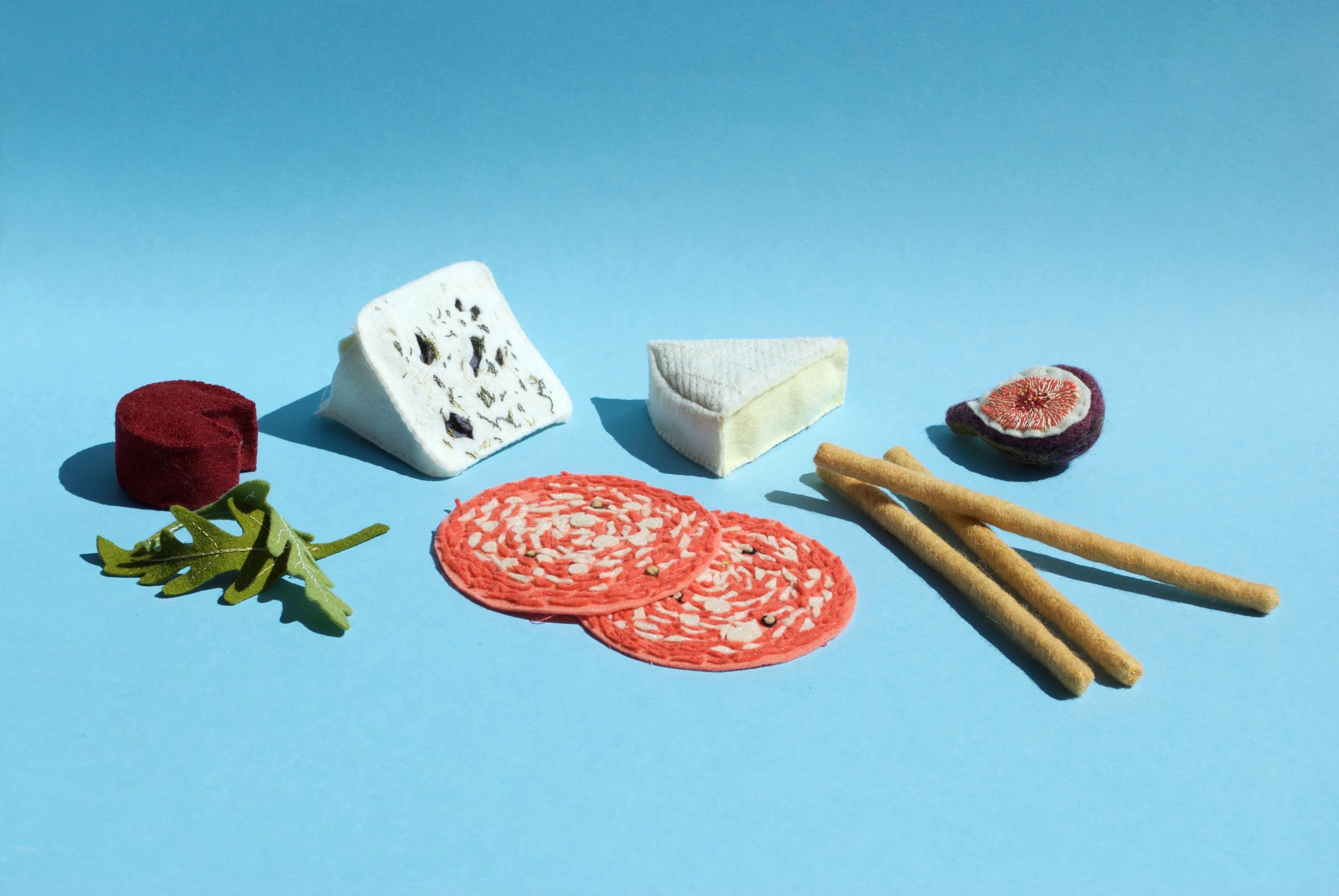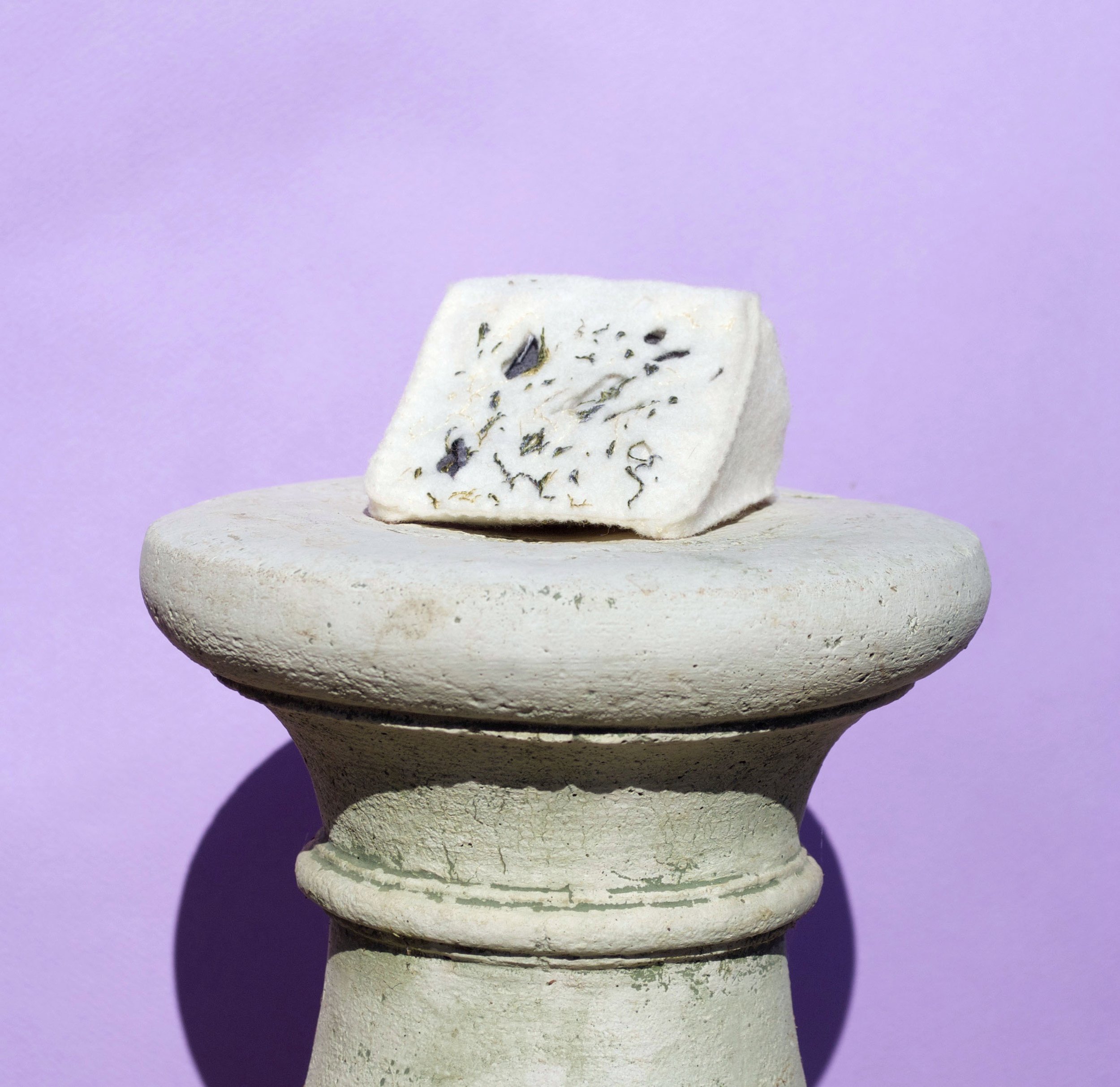Soft Food
Our family is big on food – I get regular food deliveries from my mum and grandma filled with home cooked goodies. I guess food is our love language. Over the last few years, my sister, Chloe, has been taking the family food obsession to another level with her intricate sculptural works made from felt and embroidery. I’ve always been impressed by her artistic practice and talent so when she visited recently, I took her out for a bowl of steaming chicken congee in exchange for a few words.
Words: Dan Smith
Soft Food: Chloe Smith
Dan: I always find it hard to explain exactly what sort of art you make, so if you had to explain your art to our grandma, how would you explain what you do?
Chloe: Yeah. It is hard to explain. And I kind of explain it differently depending on who the person is and how much detail I want to go into. I often use the word hyper-real. I kind of veer away from telling people that it’s specifically food. I generally tell people that it’s like hyper-real sculptures of mundane objects. I guess it’s pretty complicated but that’s probably the most synthesised way of describing it. But I wouldn’t say that to grandma because she would be like ‘what the hell is hyper-real?’ This is why I’m oftentimes very vague about it, I’m a terrible salesperson of my own work because I’ve struck this as an ongoing problem. And maybe that’s the same for any artist? Because it’s just often an expression of yourself or it’s a compulsion. It can be really hard because you’re not motivated from the end point, you’re motivated by the process.
Do you introduce yourself as an artist first and foremost?
Again, I think it totally depends on who I’m with. So I think I often read the room and tell if it’s something that I want to share. If I’m with other artists, I probably will. Like people who I know are going to get it. But I mean, living in a small town, it’s kind of hard to go through sometimes.
How come?
I guess there’s a degree of self-consciousness about it.
If you’re not like a super successful artist, you feel guilty introducing yourself as an artist? Is that what you mean?
Yeah. I think there’s definitely an element of that, but I feel like people from our generation understand that a bit more – that your work isn’t necessarily who you are or that the thing that you’re interested in defines you far more than the thing that makes you money. I feel like our generation is better at understanding that than say probably our parents’ generation. So it kind of depends on who it is.
Do you think the stereotype of the struggling artist almost traps people into that mindset of the struggle?
Well I guess we live in a society that’s obsessed with output and productivity, but people purchase art on an emotional ground, so consequently, it’s really hard to put a value on that because it’s completely arbitrary. And then it’s hard for you as an artist to put a price on your own work because how do you quantify that? And then I know there’s a lot of people that have concerns about putting a monetary value on something that feels like it’s separate from a capitalist structure. I feel like ‘the struggling artist’ kind of defines the way in which you’re struggling to work on something that has no value to a capitalist system, within a capitalist framing. The other annoying thing about it is that it’s so ridiculous that the government has cut so much arts funding when what the hell has everybody been doing in lockdown but consuming art?! Everybody’s been watching Netflix, everybody’s been streaming Melbourne Symphony Orchestra shows or whatever. The only thing to do is spend time with art in these circumstances. And yet broadly society doesn’t place a use value on it.
It’s always going to be a struggle between producing a work that’s salable and producing artwork that is like a response or an emotional exercise. So you have this constant struggle of am I being motivated by the fact that I know that it’s going to be sold really quickly? Or am I being motivated by the fact that I feel like that’s something that I want to explore?
Outside of your artwork you’re quite vocal about political and social issues, but it doesn’t seem to touch your artwork at all. How come you don’t incorporate your political or your social activist voice within your artwork?
I think there’s a couple of different reasons. I guess where people are mostly consuming my artwork is Instagram. And I personally don’t like Instagram as a platform for activism, which isn’t to say that it’s not super useful or that there’s great things happening on there, but I feel like those are conversations that I want to have face-to-face with people, because personally, I feel like the platform feels pretty feeble in what I feel like I can achieve from it in that regard. It just felt like doing it that way around was being motivated from the end point. It felt kind of like it was positioning rather than something that felt like a genuine desire to make. It felt like pressure from the platform. Everybody has a role to play in a revolution and not everybody can be physically present. Not everybody can be loud. Not everybody can be quiet. And I feel like one of the things that I’m capable of doing via my artwork is making people happy and after I realised that it was such a big part of my artwork in terms of how people were engaging with it, it felt like that was working toward my strengths and that was enough.
What’s your dream sculpture? Are we ever going to see something large scale?
I do like making things to scale, but I think rather than like one single piece that’s really, really, really big, I am always interested in doing a really, really, really large amount of one thing ... like a whole room of almonds or something! I’ve always wanted to make a massive pile of almonds. I guess it kind of requires a level up in terms of stamina on the sewing front.
A commitment to RSI.
[Laughs] I always dream up things like that. Not so much scaling up size but scaling up quantity.
Have you ever tricked someone into eating one of the works? [Laughs]
I feel like sometimes I know that a piece is really working if it’s sitting on my table in the studio and I accidentally almost go to pick it up to eat it or throw it out. I did have a Farmers Union Chocolate Milk carton. I sold it to a friend and he told me that his girlfriend almost throws it out all the time thinking that he’s just left his half drunk milk on the table.
How’s the congee?
So good!
This story was originally published in August 2020.






